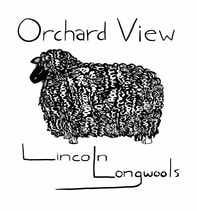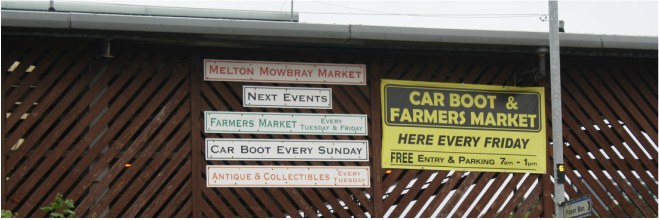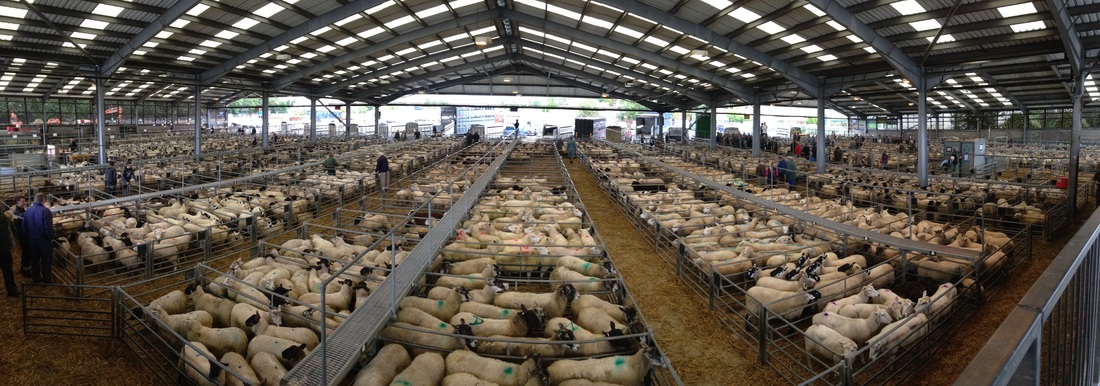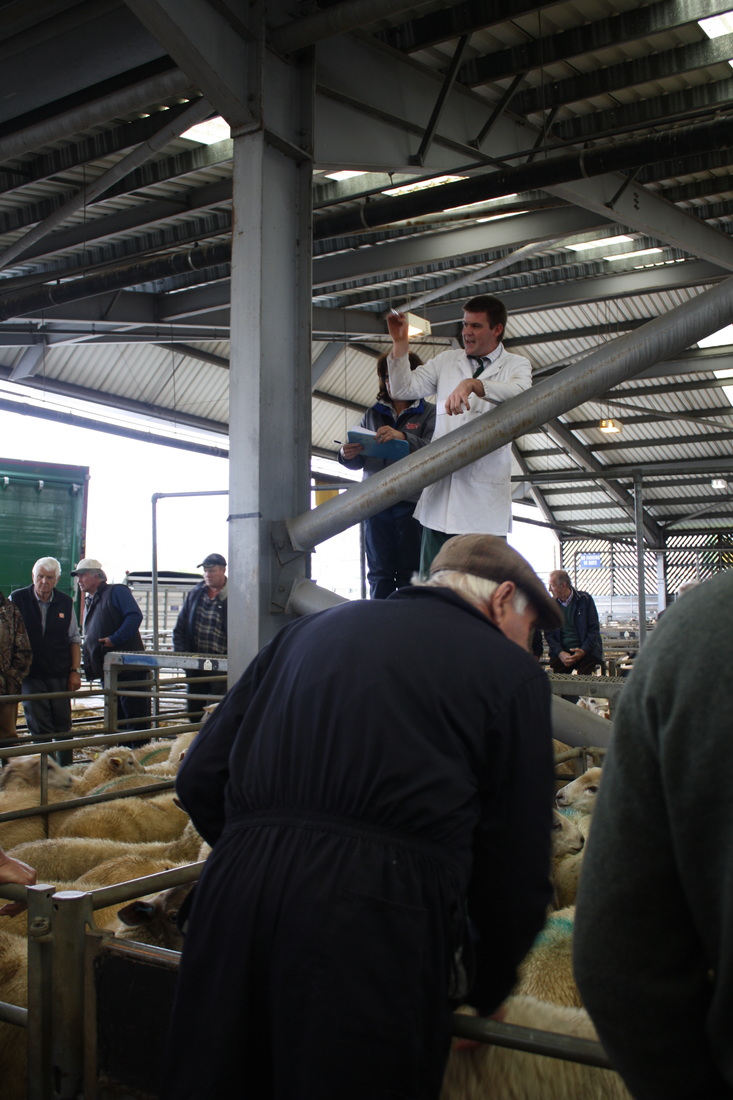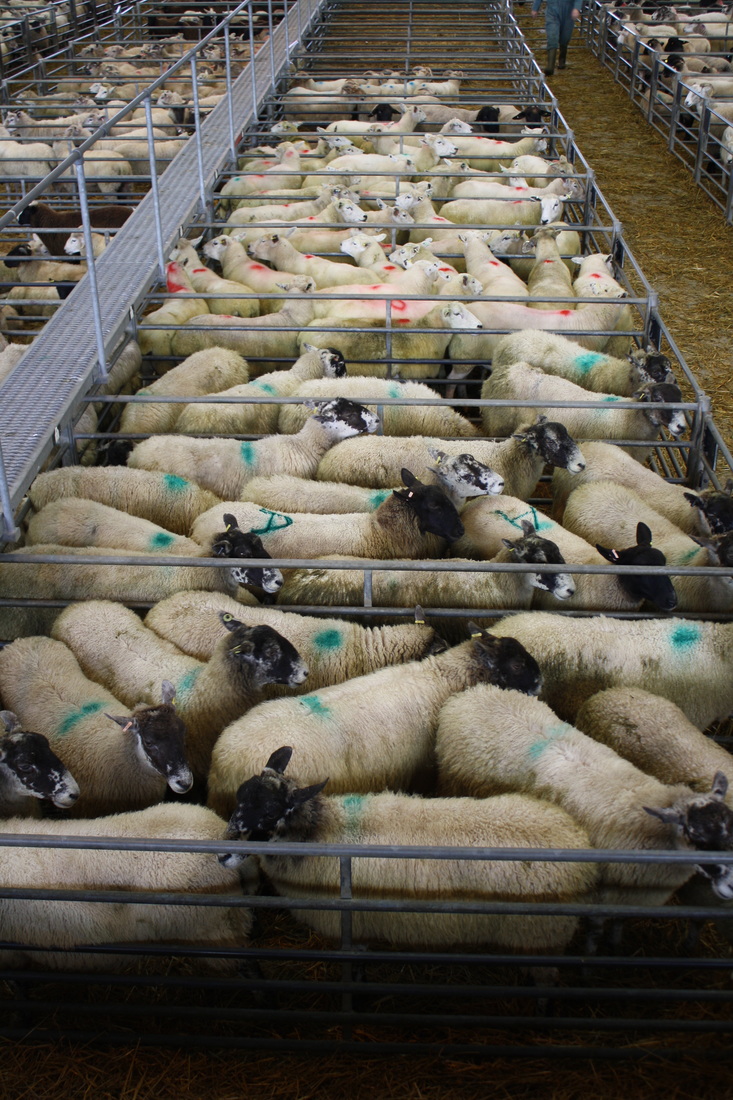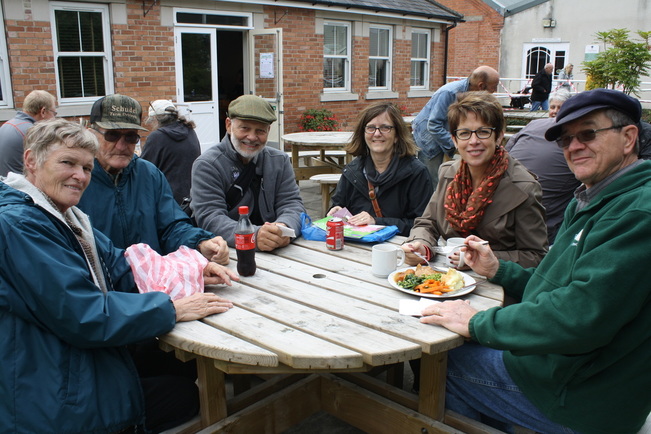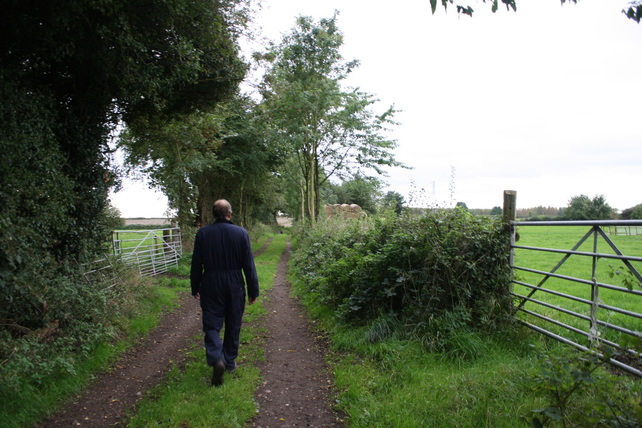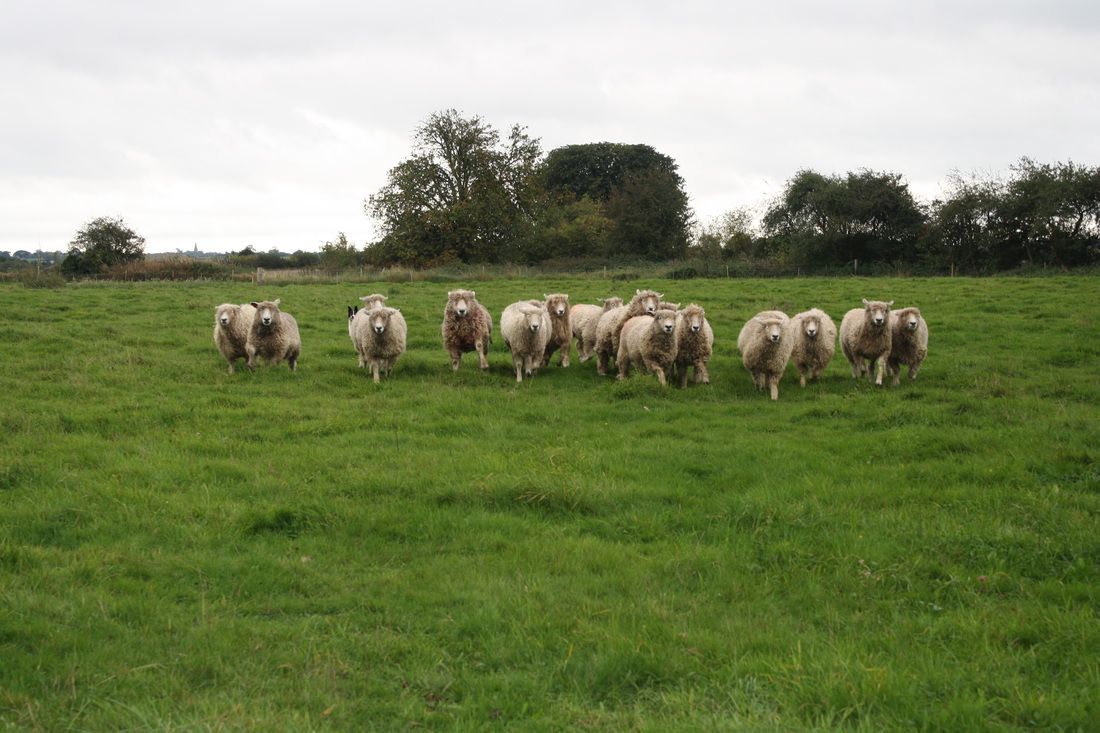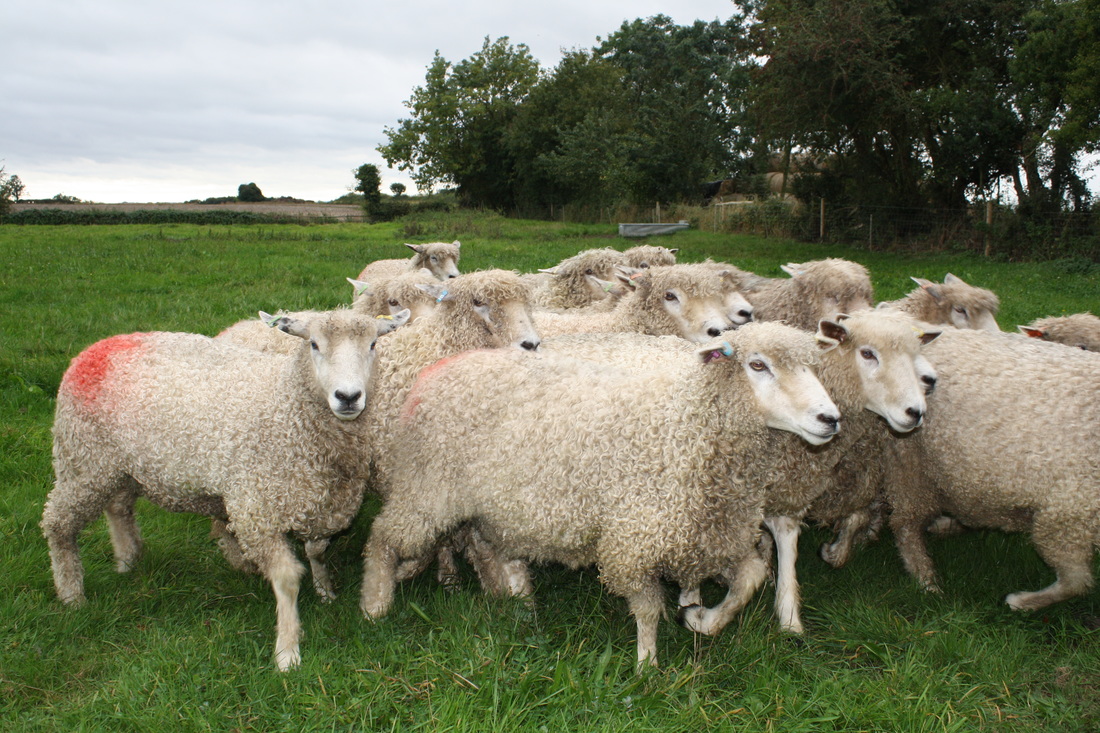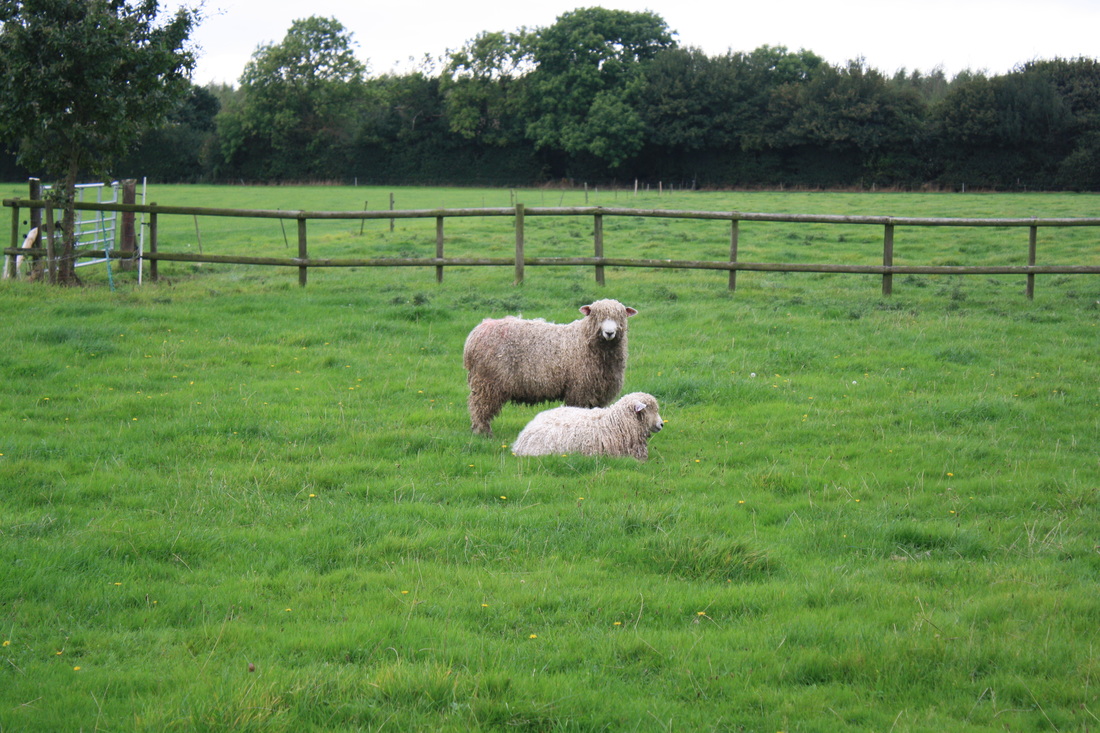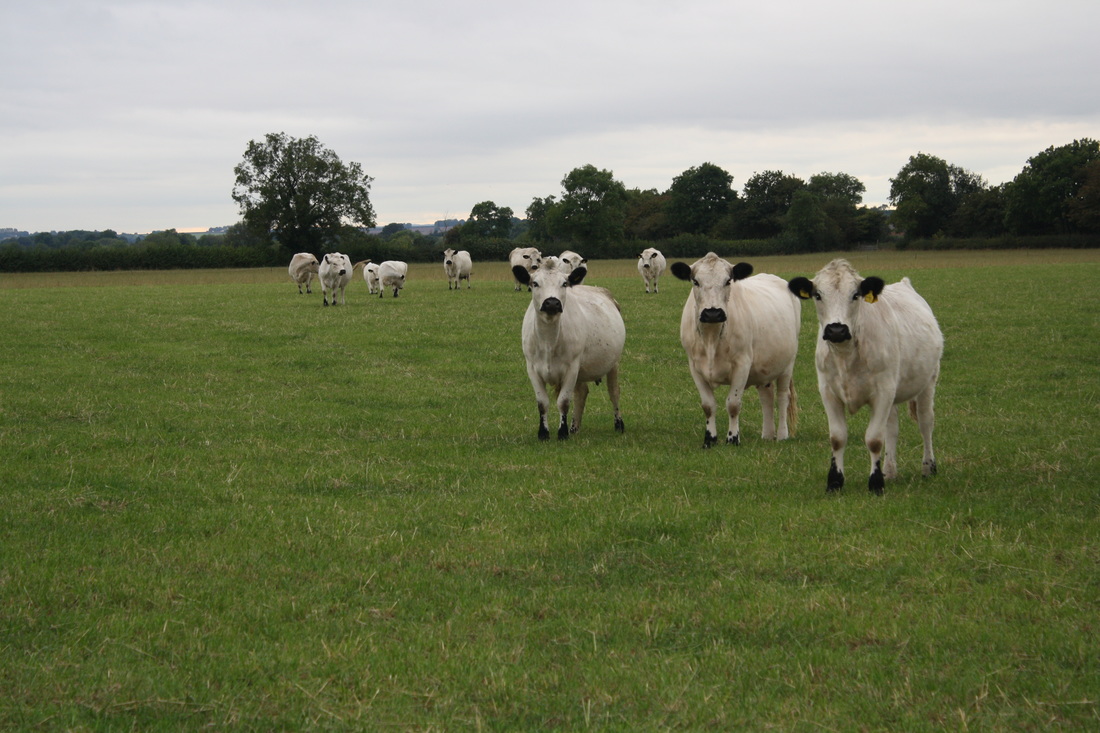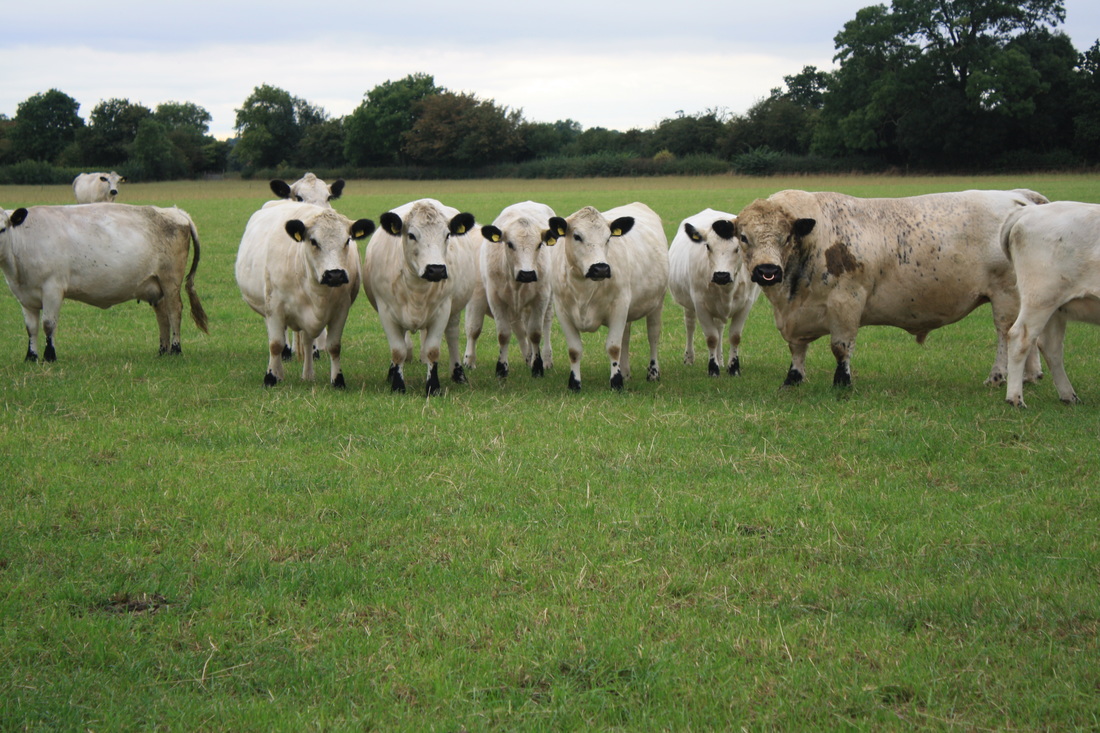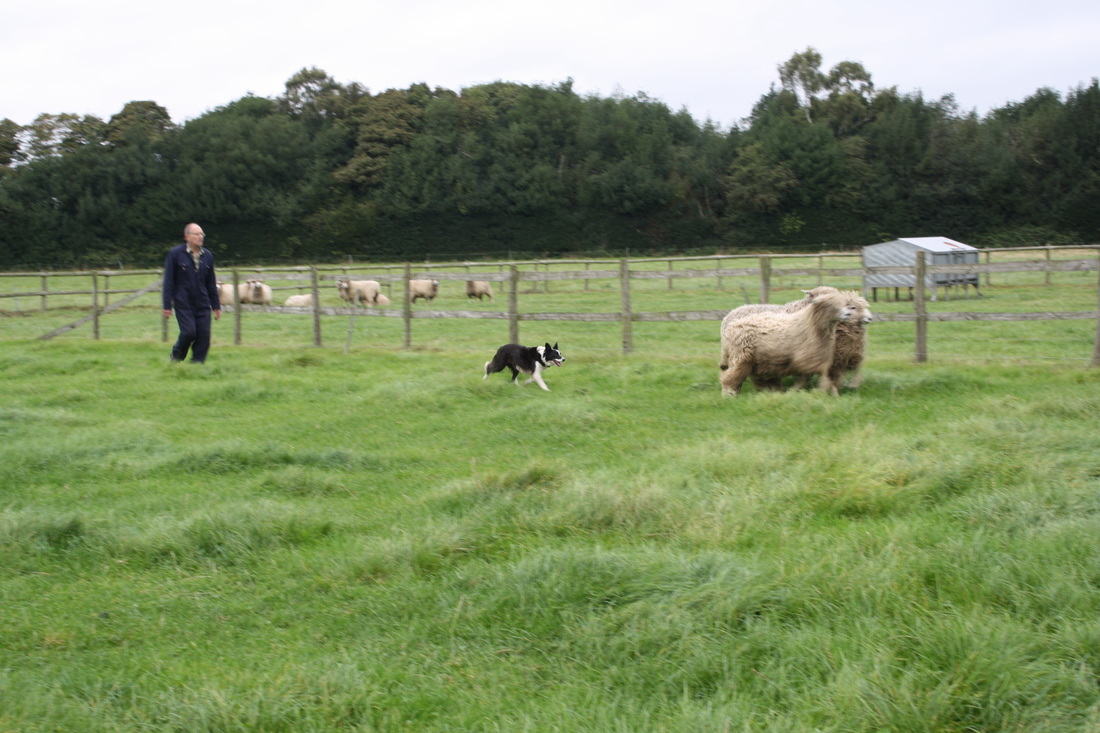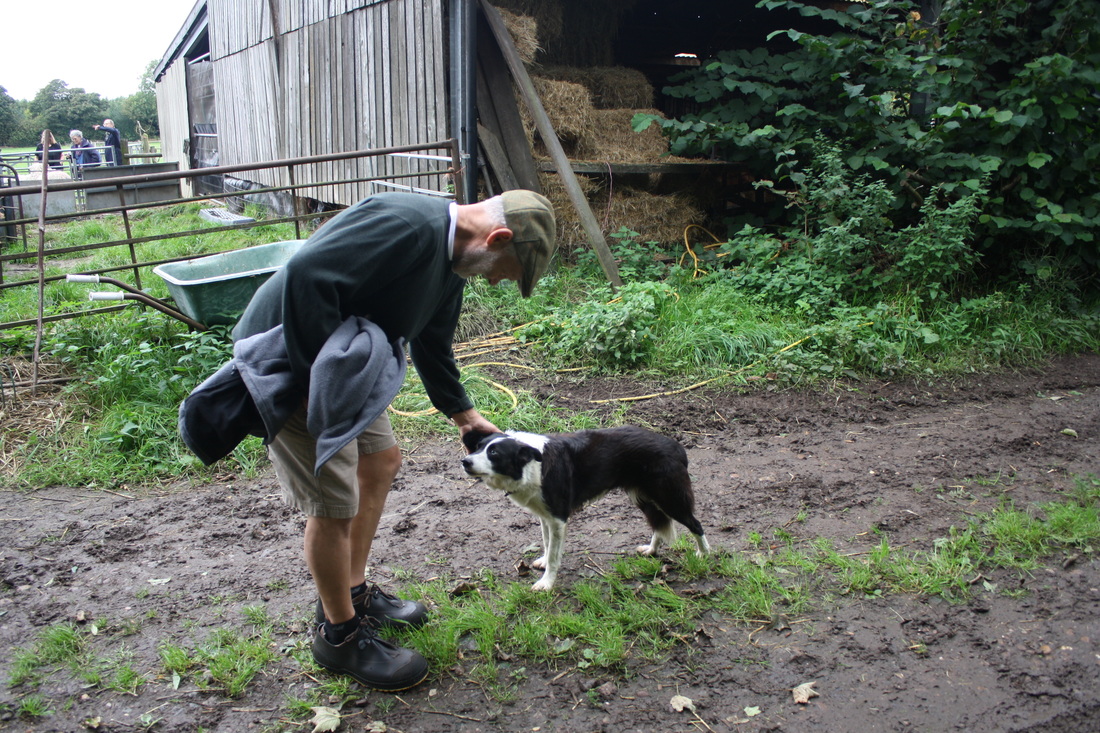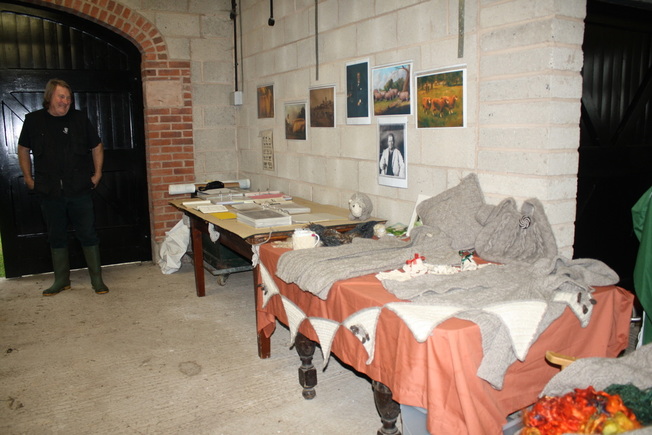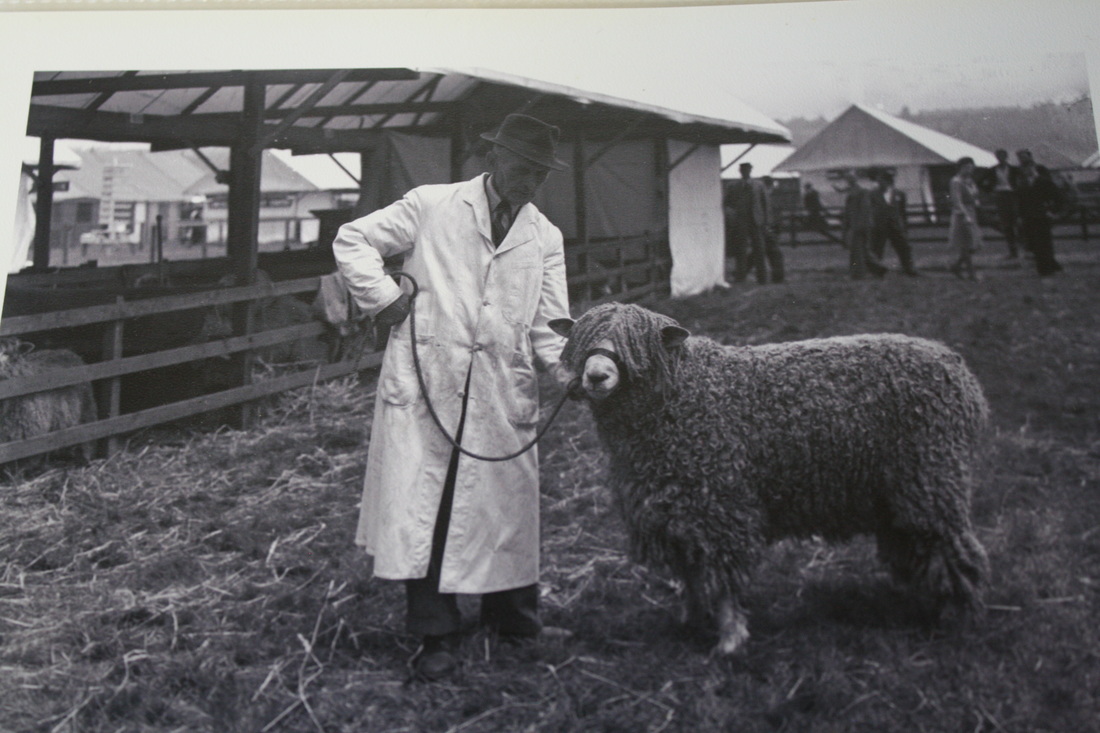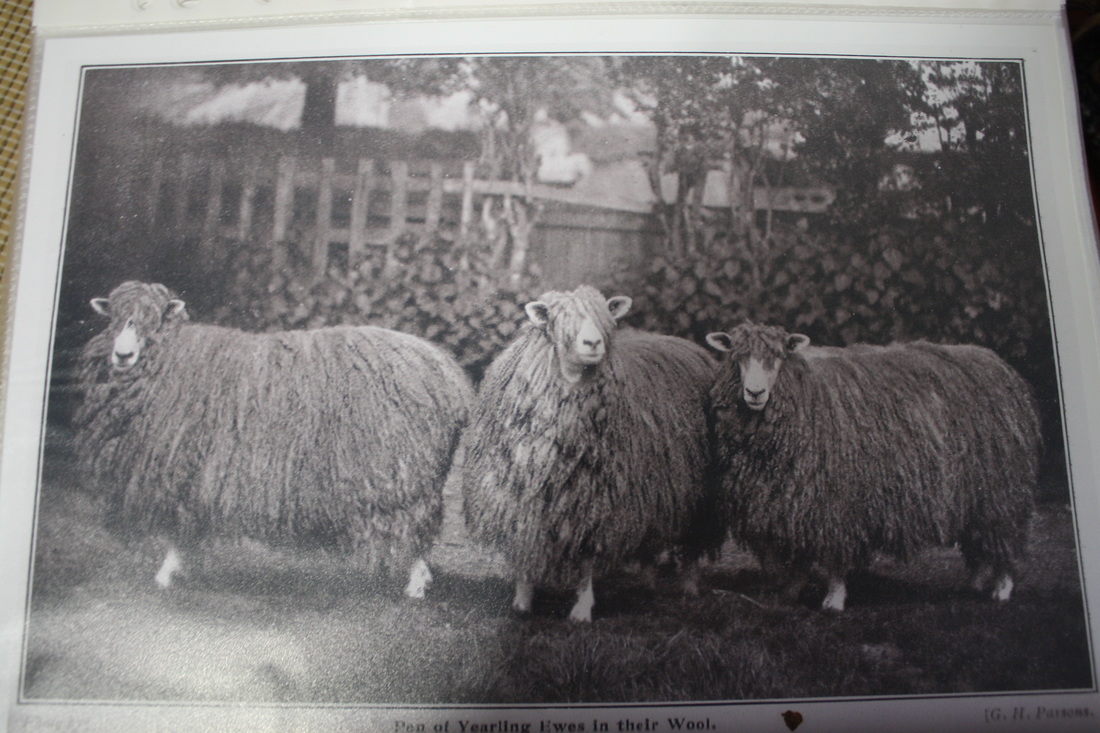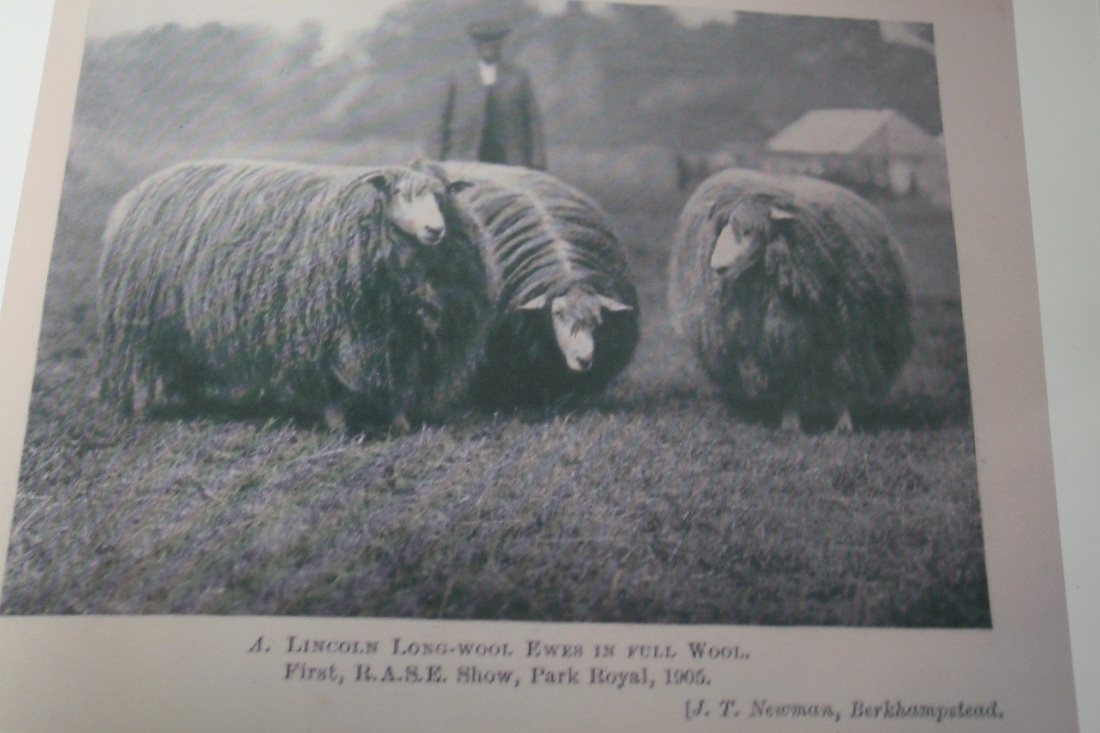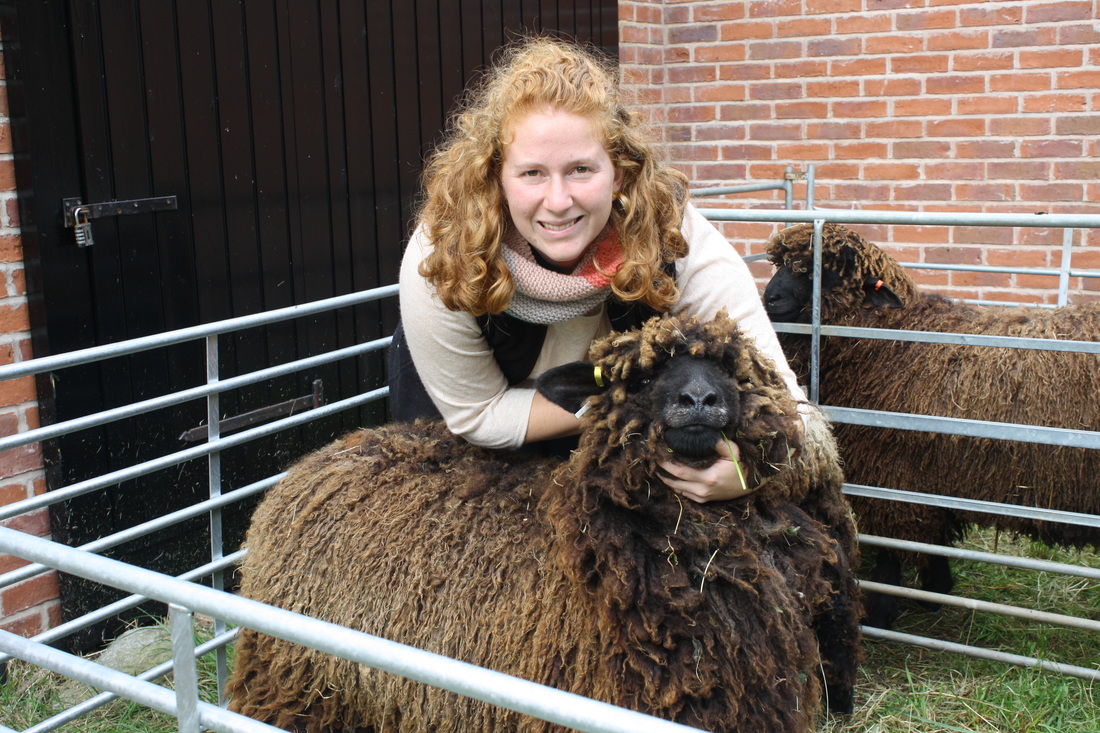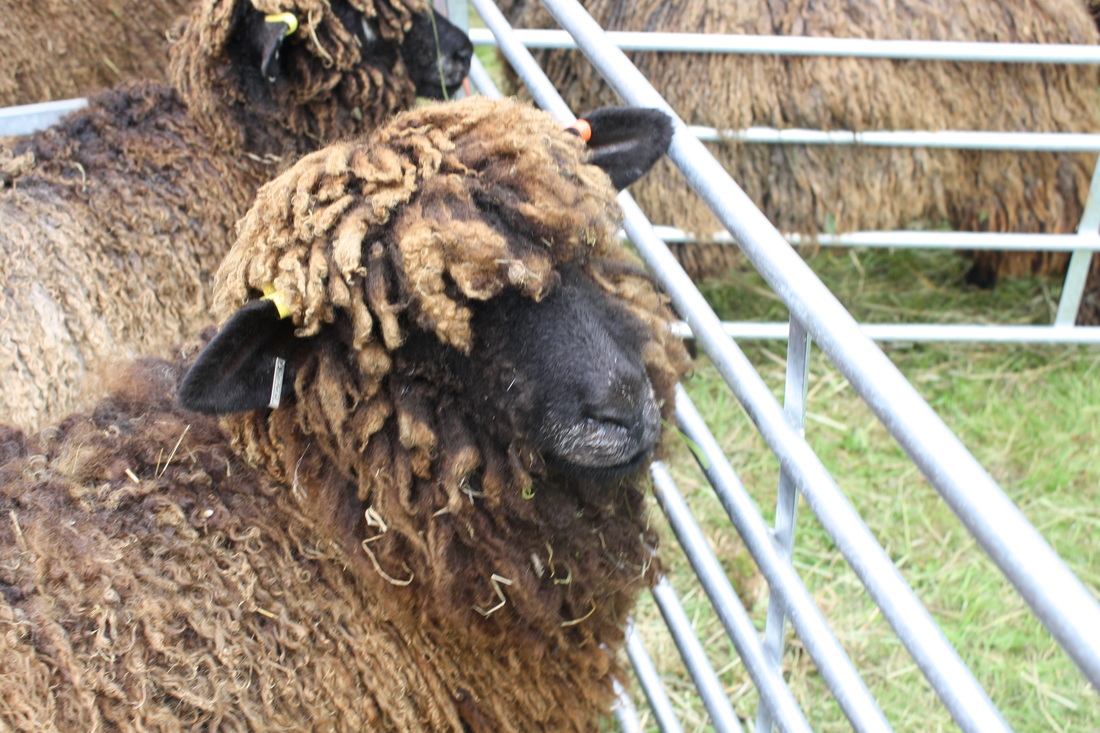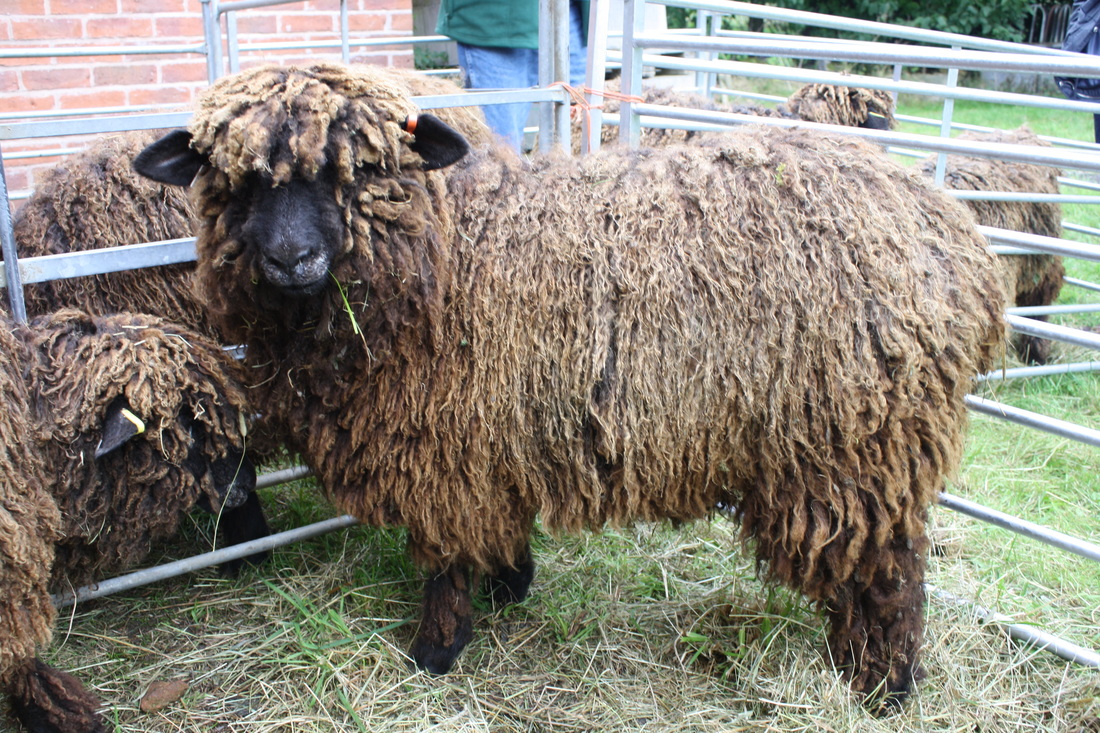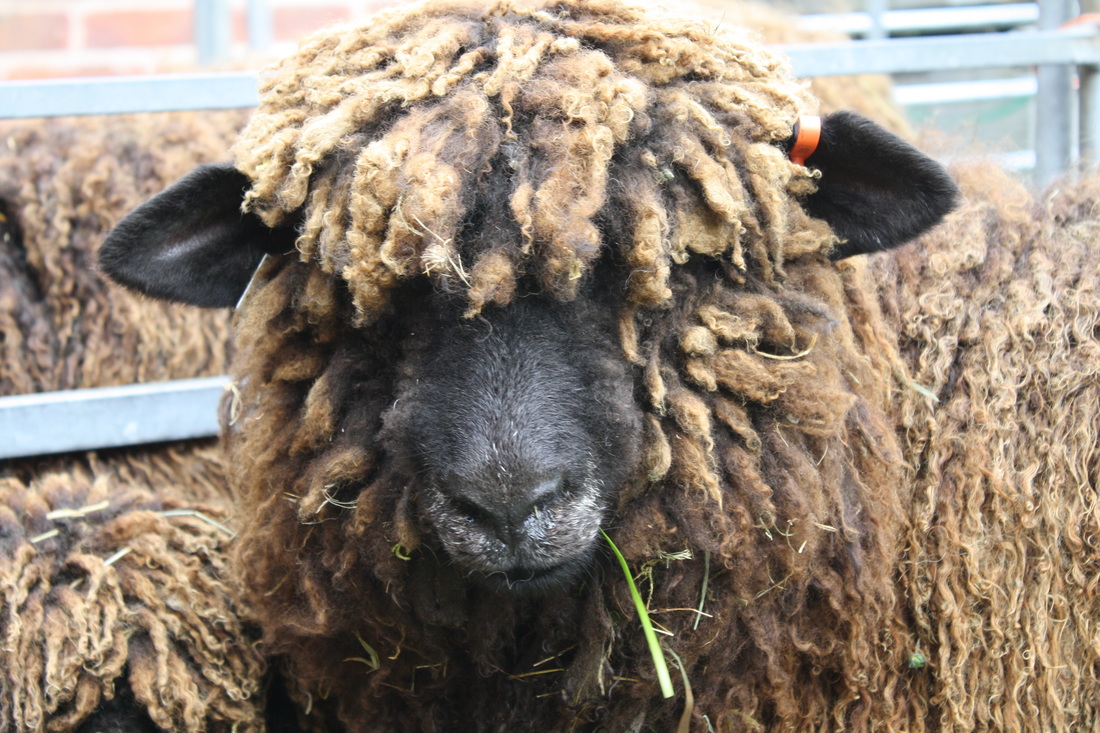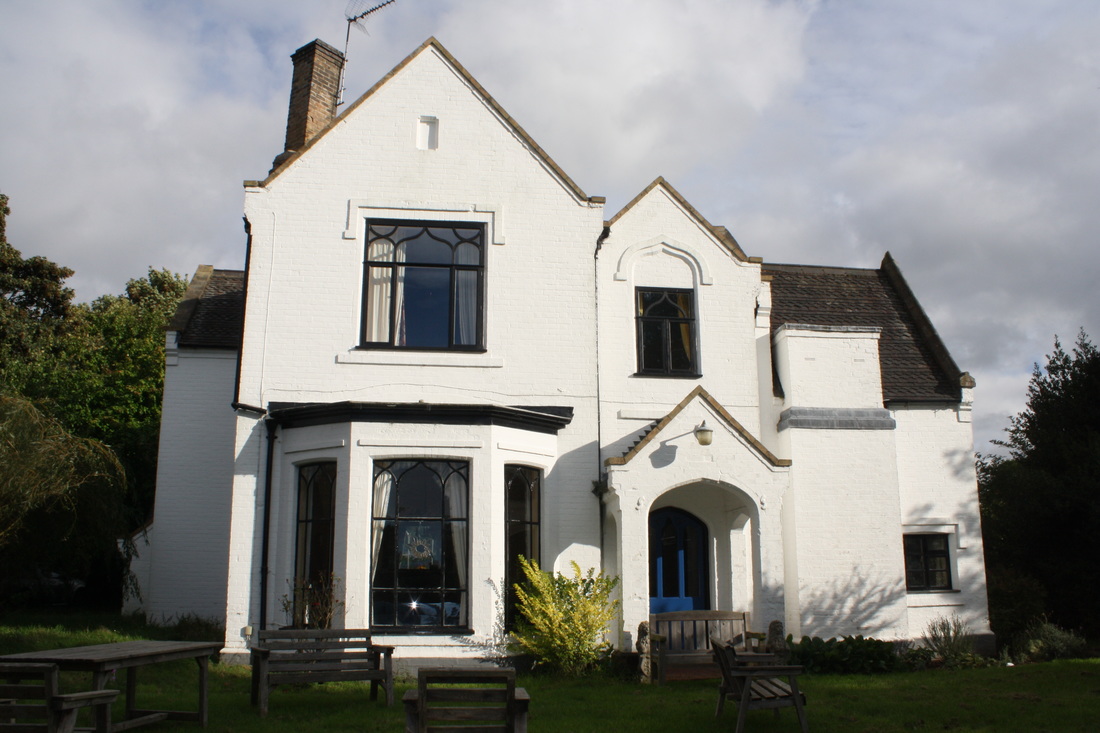|
Have you ever seen 4,000 sheep in one place? Today I did at the Melton Morbary Market auction. We travelled two hours south of York to Melton Morbary to view their market which happens every Tuesday. Keith Harding met us at the market to show us around and explain the process. Farmers bring their sheep, cattle, poultry and other animals to be sold via an auction. This time of year farms are selling the lambs they have raised all year, along with cull ewes and breeding ewes ready for tupping. Many of the fattened lambs are mules that Martyn showed us yesterday, the Swaledale x Border Leicester crosses. The sheep are separated into pens of mostly 10 sheep (some are 12 or 20, and other random assortments depending on age and size) and they are weighed for an average weight per head. The auctioneer then auctions each pen off by price per head. He will announce the average weight per pen (ie. 40 kilo), and the price the buyer pays is per head for the whole pen. It moved very quickly and was hard to follow! Keith has a bull at home that he would like to sell, so I headed to the cattle auction with him to investigate prices for the cattle. There were two cattle auctions happening. One was for calves, which looked to be mostly Holsteins. These were sold on a per head basis. At the other auction, the larger beef cows were sold on a per kilo basis and there were heifers, cows and bulls of all breeds, but they had to be less than 36 months. This auction was easier to follow, as there was a sign that stated the breed, weight and age of each cow. In addition to the sheep and cows yesterday, there were lots of poultry being sold. There was also a “pet auction” where we saw canaries being auctioned. Keith said often there are rabbits, ferrets, and guinea pigs. There was also a lot of STUFF! Antiques, books, garden tools, produce, flowers, and lots of typical flea market itens were in the market section. Across the road was a farm supply store, which I checked out. It was similar to a Tractor Supply, but much nicer! I wish Tractor Supply sold Hunter boots and Barbour jackets! We met for lunch and I had a delicious cottage pie before heading back to the bus to head for Keith’s farm. Keith and Rosemary Harding’s Swepstone flock was about an hour further south of Melton Morbory in a hamlet called Heather, in the town of Coalville. His farm is in the Leicetershire region. His home was absolutely gorgeous; exactly what I would picture an old English country home to look like. He had a beautiful patio and garden surrounded by a brick wall. Inside the wall they had a beautiful little vegetable garden, small greenhouse and apple trees. It is exactly what I hope my backyard looks like someday! There were also three adorable kittens playing around who were very friendly. Steve and Chris Higgins, another Lincoln breeder met us at Keith’s and brought several of his natural colored lambs for us to see. His has one of the only natural colored Lincoln flocks in the country. Upon introductions, we headed out down a lane to his pastures to see his sheep. Keith has 44 breeding Lincoln ewes and Jess, his border collie, rounded them up for us to look at. He also has a Suffolk ram that he breeds to his older ewes who no longer are producing quality Lincoln lambs. His pastures, just like Martyn's, are incredibly beautiful. I learned that he feeds his sheep clover seed to help reseed the pasture, as the seed is durable enough to make it through the digestive tract without being damaged. I am definitely going to try that on my pastures! We also got to see his British White cattle that he raises. He has around 20 cows that were currently being bred to a very large bull. They are beautiful cattle! We went over see another breeding group and two of the rams and one ewe had gotten into another pen. I’m glad it’s not just my flock that has these problems! Thankfully he has Jess, which makes the whole process of rounding them up and separating them much easier. I may have to talk to my dad about getting a herding dog… After walking the pastures, we headed back to their garage, where Steve and Chris had a display of historical and hand knit products for us to look at. Steve has a great interest in the history of the Lincoln breed and has spent a lot of time researching newspaper articles, shows, photographs, anything that can help document the breed’s history. He has several binders full of over 200 articles, photographs and posters, along with old show catalogs that document how the breed has changed over the years. In 1820 a man offered 1,000 guineas (50,000 pounds in today's money) if someone could find a sheep better than his Lincoln Longwool. No one could and that put Lincolns on the map. Export to Australia began shortly after that in the 1830's and 1840's and reached its peak in the 1850's. After that, export of Lincolns to Argentina began and was very important. In the mid-1900's Lincolns began to become less popular and by the 1970's had nearly disappeared. In the 1911 show catalog lambs were shown in pens of 5, and each exhibitor was required to have three pens, and there were 15 exhibitors. That is a lot of Lincoln lambs at one show! By 1970, the same show catalog only had two Lincolns being shown. Chris had a lot of yarn made several years ago and enjoys knitting to show the beauty of it. She had some beautifully cabled throws, cowls and vests for us to look at. We then headed outside for a judging contest, similar to what we did at Martyn's yesterday. Keith had eight ewe lambs and we had to order the top five. Steve had trucked five of his "shadow" flock (Natural Colored) for us to see since we weren't able to get to his farm this trip. He had two ram lambs and four ewe lambs and we had to judge each group. These were the first natural colored Lincolns I had seen this trip, as they are not common or popular here in the UK. They used to be completely absent, as any colored lamb was killed at birth. Now there are only a couple flocks. They still aren't able to show in Association shows, rather they show in rare breeds classes. This is so different than the US, where natural colored almost seem to be the preference, particularly in the Northeast. It was so funny to hear Keith tease Steve about his colored sheep. To Keith, they almost aren't "real" Lincolns. Mark and Anita won both the white and colored contests and we headed into the house for another wonderful afternoon of tea, goodies and conversation. Keith and Ro's farmhouse is over 150 years old and looks like what I would consider an idyllic farmhouse with big kitchen. Ro shared her recipe for an almond tart with me and I can't wait to get home and try it!
1 Comment
Deborah
9/29/2016 06:21:23 am
Love the black ears of the white cattle and the old photos of the larger Lincolns!
Reply
Leave a Reply. |
AuthorEmmaline Long, main owner of Orchard View Farm, has a passion for Lincoln sheep and loves educating others about her breed and farm, She currently serves as the Vice President of the National Lincoln Breeders Association. Archives
October 2020
Categories
All
|
Orchard View Lincoln Longwools7617 S. Lake Rd., Bergen NY 14416 |
Contact UsStay Up-To-DateFollow our blog!
|
